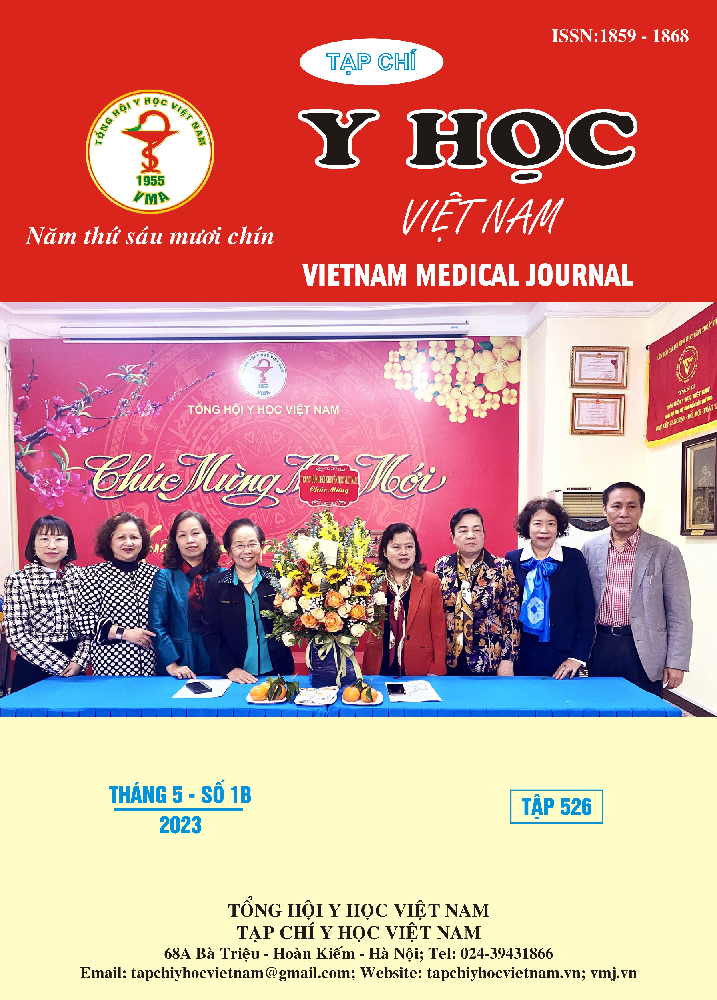RESIN INFILTRATION IN THE MANAGEMENT OF MOLAR-INCISOR HYPOMINERALIZATION (MIH) PATIENT: A CASE REPORT
Main Article Content
Abstract
Background: Molar incisor hypomineralization (MIH) is defined as “demarcated, qualitative developmental defects of systemic origin of the enamel of one or more first permanent molars with or without the involvement of incisors.”. The exact etiology of MIH is still unclear but considered to be multifactorial. Resin infiltration provides a non-invasive treatment option for discoloured anterior non-cavitated lesions, which commonly patients can present for aesthetic needs and treatment. Objective: To report the management of MIH opacities in anterior teeth with resin infiltration technique which can achieve a non-invasive aesthetic result. Method: The author reports on one case of a 16 years old Vietnamese female patient, presented with the chief complaints of high dental sensibility, masticatory difficulty, and discoloration in the upper right first central incisor since their eruption. The treatment proposed to the patient was a conservative approach by the use of resin infiltration. Results: The treatment provided an aesthetic result that was non-invasive and produced a satisfactory outcome. Conclusion: Resin infiltration provides a non-invasive treatment option for white spots caused by molar-incisor hypomineralization with a satisfactory outcome as presented in this case.
Article Details
Keywords
Case report, Molar incisor hypomineralization (MIH), Opacities, Anterior teeth, Resin infiltration
References
2. Lygidakis, N.A., et al., Best clinical practice guidance for clinicians dealing with children presenting with molar-incisor-hypomineralisation (MIH): an updated European Academy of Paediatric Dentistry policy document. European Archives of Paediatric Dentistry, 2021.
3. Alaluusua, S., Aetiology of Molar-Incisor Hypomineralisation: A systematic review. European Archives of Paediatric Dentistry, 2010. 11(2): p. 53-58.
4. Steffen, R., N. Krämer, and K. Bekes, The Würzburg MIH concept: the MIH treatment need index (MIH TNI). European Archives of Paediatric Dentistry, 2017. 18(5): p. 355-361.
5. Bahadır, H.S., G. Karadağ, and Y. Bayraktar, Minimally Invasive Approach for Improving Anterior Dental Aesthetics: Case Report with 1-Year Follow-Up. Case Reports in Dentistry, 2018. 2018: p. 4601795.
6. Padavala, S. and G. Sukumaran, Molar Incisor Hypomineralization and Its Prevalence. Contemp Clin Dent, 2018. 9(Suppl 2): p. S246-s250.
7. Elfrink, M.E.C., et al., Standardised studies on Molar Incisor Hypomineralisation (MIH) and Hypomineralised Second Primary Molars (HSPM): a need. European Archives of Paediatric Dentistry, 2015. 16(3): p. 247-255.
8. Bhandari, R., et al., Concealment effect of resin infiltration on incisor of Grade I molar incisor hypomineralization patients: An in vivo study. 2018. 21(4): p. 450-454.
9. Fayle, S.J.E.J.o.P.D., Molar incisor hypomineralisation: restorative management. 2003. 4: p. 121-126.
10. Cocco, A., et al., Treatment of fluorosis spots using a resin infiltration technique: 14-month follow-up. 2016. 41(4): p. 357-362.


